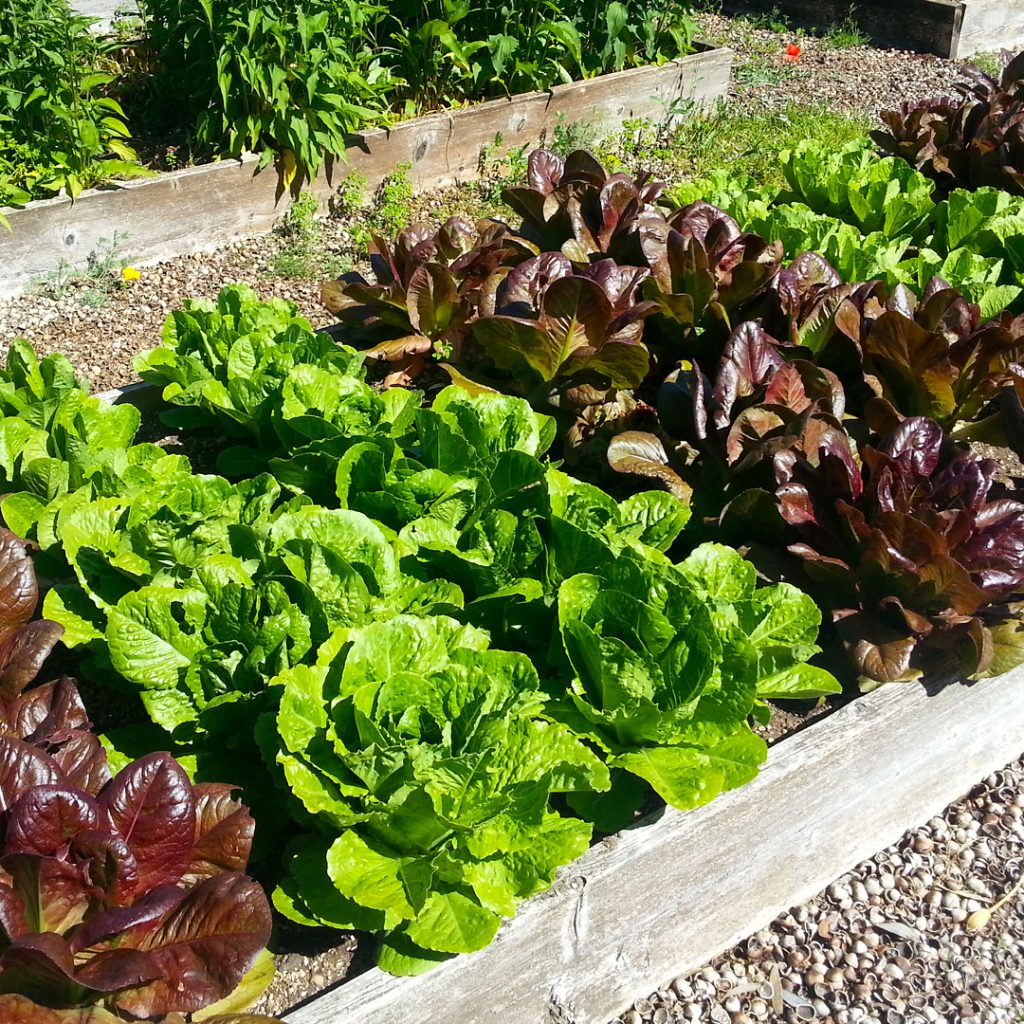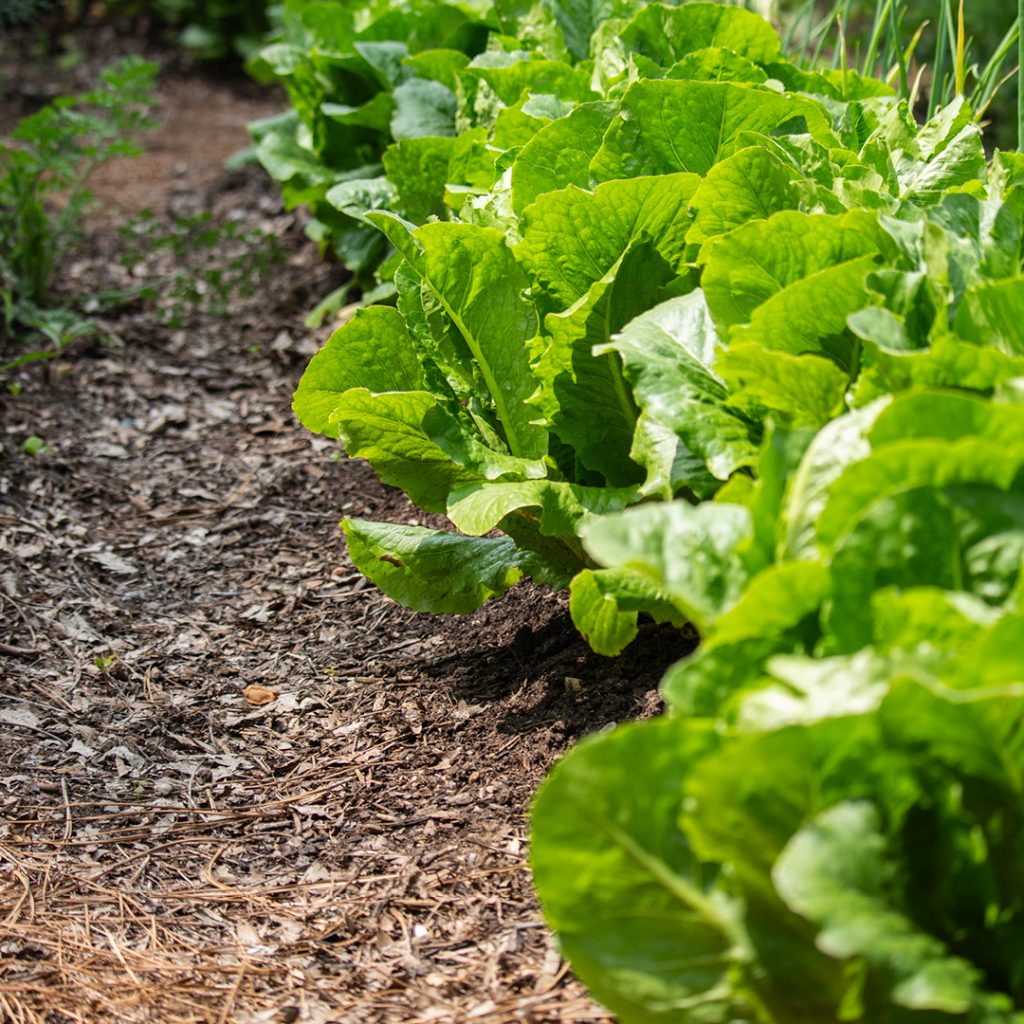In the busy, beautiful, and bountiful universe of vegetable gardening, there’s a particular plant that always holds a special place in our hearts: lettuce. No wonder we love lettuce; it is early planted, quick and easy to grow, available in almost unlimited varieties, tasty, and loaded with numerous nutritional benefits. Absolutely! We love growing lettuce! Yet, we often find ourselves locked in a battle against a frustrating foe: bolting.
What is Bolting?
Bolting refers to the process where a plant, such as lettuce, prematurely produces a flowering stalk. In the case of lettuce, this means the plant shifts its energy from leaf production to seed production, resulting in bitter-tasting leaves and a decline in overall quality.
Why Does Lettuce Bolt?
Several factors can trigger bolting in lettuce:
- Temperature: Lettuce prefers cool temperatures, typically between 60-70°F. When exposed to prolonged periods of high temperatures, especially above 80°F, lettuce may bolt as a survival mechanism to produce seeds before the heat stress becomes too severe.
- Day Length: Lettuce is sensitive to changes in day length. Certain varieties are more prone to bolting as the days lengthen in the late spring or summer, especially if they are exposed to extended periods of daylight.
- Stress: Any form of stress, such as drought, overcrowding, or nutrient deficiencies, can trigger lettuce to bolt as it tries to ensure its survival by producing seeds.
How to Avoid Lettuce Bolting
You’ve done the hard work of planting and nurturing your lettuce patch. We’ve put together some strategies to help avoid bolting for as long as possible.
- Plant at the Right Time: Plant lettuce early in the season when temperatures are cooler and days are shorter. This helps minimize the risk of bolting.
- Provide Adequate Shade: If you’re growing lettuce in warmer climates or during the summer months, provide some shade to protect the plants from intense sunlight and heat.
- Maintain Consistent Moisture: Keep the soil consistently moist to prevent stress from drought, but be careful not to overwater, as soggy soil can also stress the plants.
- Harvest Promptly: Harvest lettuce regularly to encourage new leaf growth and prevent the plants from diverting energy into flowering. Harvesting outer leaves rather than whole heads can also prolong the plant’s lifespan.
- Succession Plant: Instead of planting all your lettuce at once, stagger plantings every few weeks to ensure a continuous harvest and reduce the likelihood of all plants bolting simultaneously.
- Choose the Right Varieties: Opt for lettuce varieties less prone to bolting, such as “bolt-resistant” or “slow-bolt” varieties. These are specifically bred to withstand higher temperatures and longer daylight hours.
Slow-Bolt and Bolt-Resistant Lettuce Varieties
Batavian Lettuce: Also known as French crisp or summer crisp lettuce, Batavian varieties like ‘Muir,’ ‘Nevada’ and ‘Ice Queen’ all offer a balance between the crisp texture of iceberg lettuce and the flavor of leaf lettuces while being slow to bolt.
Iceberg Lettuce: Some folks must have iceberg lettuce, and although it is not necessarily known for its heat tolerance and bolting resistance, ‘Ithaca’ and ‘Summertime’ both fit the bill as slow-bolters.
Romaine (Cos) Lettuce: In addition to ‘Jericho’ and ‘Parris Island,’ other slow-bolting romaine lettuce varieties include ‘Green Towers’ and ‘Cimmaron.’
Summer Crisp Lettuce: Varieties like ‘Summertime’ and ‘Fusion’ are specifically bred for their ability to resist bolting in hot weather while still offering a crisp texture and mild flavor.
Butterhead (Bibb) Lettuce: Varieties such as ‘Buttercrunch’ and ‘Summer Bibb’ are slow bolting alternatives to traditional Bibb lettuces, offering a sweet, buttery flavor and crisp texture in both red and green varieties.
Baby Leaf Lettuce: Depending on the source, these come in a variety of mixed types. However, they are harvested when young, think miniature gourmet greens, thus avoiding bolting.
Oakleaf Lettuce: Oakleaf lettuces are known for their delicate, lobed leaves and mild flavor. Varieties like ‘Salad Bowl’ and ‘Royal Oakleaf’ are slow to bolt, making them excellent choices for summer salads.
Red Leaf Lettuce: While red leaf lettuces can bolt more quickly than green varieties, some slow bolting options include ‘Shirane Sky’ and ‘Ruby Sky,’ which retain their color and flavor in hot weather.
Green Leaf Lettuce: Excellent bolt-resistant green leaf lettuce includes ‘Grazion’ with its dark-green wavy leaves and ‘Starfighter’ with its great flavor and shiny green leaves.
YOUR GARDEN CENTER offers an outstanding collection of slow-bolt and bolt-resistant lettuces in seed packets and plugs so you can harvest and enjoy lush, leafy lettuce all summer long.





 15% Military Discount
15% Military Discount